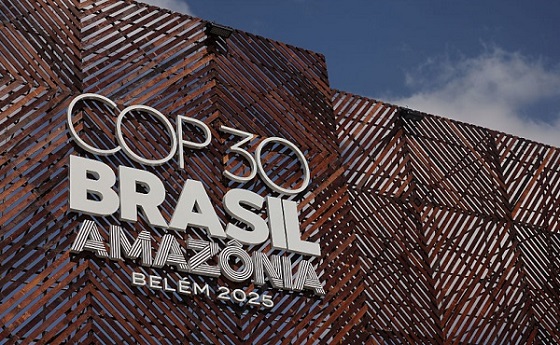Opinion
5 year study by NAIT shows angle of panel is more significant than snowfall in Northern Alberta

Study looks at impact of snow and angle of solar panels Old Man Winter takes a lot of flak in Alberta for everything from costly heating bills to frozen car batteries. But when it comes to the impact on solar panels, winter gets an unjustified bad rap.
A five-year study led by NAIT’s Alternative Energy Technology program found that snowfall on photovoltaic solar panels results in about a 3% energy loss. That’s significantly less than the 20% drain that industry had traditionally estimated despite a lack of data.
Tim Matthews, a technologist and one of the leads on the study, says the results will improve modelling used to estimate solar energy production that determines return on investment. Ultimately, that means a win for consumers.
NAIT launched the reference array snow study in 2012 with the City of Edmonton and Solar Energy Society of
Alberta. A system of 12 solar modules was installed atop the Shaw Theatre on Main Campus to not only measure the impact of snow on the system, but also how the tilt of each module affects energy production.
“The rule of thumb throughout industry was to design a system as if it had no snow and then wipe 20% of energy production off the slate – we’re going to lose 20% because we’re in Canada,” says Matthews. “Everybody was terrified of underestimating the impact of snow and latitude [on energy production].”
They found that the angle of the solar panels has a far greater impact on energy production than snowfall. Solar modules were fixed at six different angles – 14, 18, 27, 45, 53 and 90 degrees – which represent roof pitches commonly found on commercial buildings and homes. Six modules were cleared of snow every day, while the remaining six served as a control.
The least efficient was the module set at 90 degrees, like a wall-mount system, which saw a 24% loss in performance. The
module tilted to 53 degrees was most efficient, which confirmed an industry standard that solar systems are optimized when tilted to the equivalent of a city’s latitude.
The ideal angle for maximum production with snow accumulation was 45 degrees.
Matthews cautions that even five years worth of data is a small window when dealing with fluctuating variables such as
weather. But for a homeowner or business who already has historic data on their energy consumption, the tilt and snow impact clear up what had been a cloudy picture in predicting the cost-benefit of solar.
“Having this information raises the level of precision when it comes to engineering, design and production modelling,” says
Matthews. “A company that’s doing solar installation and design can go to a client and say, ‘This is precise. You can take this to the bank.’”
Crunching five years of data The work of crunching through all the data fell to students (and now grads of the class of ’18) Christian Brown and Jackson Belley as the basis of their final course project, or capstone.
That’s no mean feat considering energy performance data was collected from all 12 solar modules every five minutes every
day for five years – enough to fill 6,000 spreadsheet files.
“It was an insane amount of data,” says Brown. “That was not quite half, maybe the first third of the project. Months of work. It was a lot of learning.”
After five years of getting up at all hours to clear snow from the reference array – including Christmas – Matthews is glad
to be rid of that daily chore. For anyone who operates a solar system, he cautions that snow should only be cleared if it’s
safe to do so, such as on a flat commercial roof.
“Should you clean the ones on your [pitched] roof? Heck no,” he says. Nor does he recommend asking a contractor to
remove it. It’s just not worth it for the minimal gain in power efficiency from a snow-free solar system.
“Our recommendation is that it makes no sense. One hour of time from a professional or an apprentice is just not worth
it.”
Data was gradually exported by day, month, season and year, making it more digestible and user-friendly for industry,
government and institutions, but also the schools and not-for-profits, who are interested in the information.
The study’s interim findings are available online, while the students’ final report with datasets will be published on the
Alternative Energy Technology program page this fall. It’s expected to be a hot commodity. (Anyone can request the data now).
“The amount of requests that we get [for the data], it’s obvious people are interested and they want to know how does snow
affect solar modules,” says Belley.
Brown adds it’s a pretty cool feeling to work on a class assignment that has a major real-world impact. “The idea of solar won’t be as much of a gamble any more.”
Plans are also in the works to submit the findings for peer review and publication in a scientific journal.
After reading this report and remembering that both the Province of Alberta and the City of Red Deer are looking into a program that would pay for the program and be billed via your property taxes over 10 years.
The province and the city were very much forward thinking, I would offer and if snow loses only 3 % of power it does make more sense. Right?
Agriculture
The Climate Argument Against Livestock Doesn’t Add Up

From the Frontier Centre for Public Policy
Livestock contribute far less to emissions than activists claim, and eliminating them would weaken nutrition, resilience and food security
The war on livestock pushed by Net Zero ideologues is not environmental science; it’s a dangerous, misguided campaign that threatens global food security.
The priests of Net Zero 2050 have declared war on the cow, the pig and the chicken. From glass towers in London, Brussels and Ottawa, they argue that cutting animal protein, shrinking herds and pushing people toward lentils and lab-grown alternatives will save the climate from a steer’s burp.
This is not science. It is an urban belief that billions of people can be pushed toward a diet promoted by some policymakers who have never worked a field or heard a rooster at dawn. Eliminating or sharply reducing livestock would destabilize food systems and increase global hunger. In Canada, livestock account for about three per cent of total greenhouse gas emissions, according to Environment and Climate Change Canada.
Activists speak as if livestock suddenly appeared in the last century, belching fossil carbon into the air. In reality, the relationship between humans and the animals we raise is older than agriculture. It is part of how our species developed.
Two million years ago, early humans ate meat and marrow, mastered fire and developed larger brains. The expensive-tissue hypothesis, a theory that explains how early humans traded gut size for brain growth, is not ideology; it is basic anthropology. Animal fat and protein helped build the human brain and the societies that followed.
Domestication deepened that relationship. When humans raised cattle, sheep, pigs and chickens, we created a long partnership that shaped both species. Wolves became dogs. Aurochs, the wild ancestors of modern cattle, became domesticated animals. Junglefowl became chickens that could lay eggs reliably. These animals lived with us because it increased their chances of survival.
In return, they received protection, veterinary care and steady food during drought and winter. More than 70,000 Canadian farms raise cattle, hogs, poultry or sheep, supporting hundreds of thousands of jobs across the supply chain.
Livestock also protected people from climate extremes. When crops failed, grasslands still produced forage, and herds converted that into food. During the Little Ice Age, millions in Europe starved because grain crops collapsed. Pastoral communities, which lived from herding livestock rather than crops, survived because their herds could still graze. Removing livestock would offer little climate benefit, yet it would eliminate one of humanity’s most reliable protections against environmental shocks.
Today, a Maasai child in Kenya or northern Tanzania drinking milk from a cow grazing on dry land has a steadier food source than a vegan in a Berlin apartment relying on global shipping. Modern genetics and nutrition have pushed this relationship further. For the first time, the poorest billion people have access to complete protein and key nutrients such as iron, zinc, B12 and retinol, a form of vitamin A, that plants cannot supply without industrial processing or fortification. Canada also imports significant volumes of soy-based and other plant-protein products, making many urban vegan diets more dependent on long-distance supply chains than people assume. The war on livestock is not a war on carbon; it is a war on the most successful anti-poverty tool ever created.
And what about the animals? Remove humans tomorrow and most commercial chickens would die of exposure, merino sheep would overheat under their own wool and dairy cattle would suffer from untreated mastitis (a bacterial infection of the udder). These species are fully domesticated. Without us, they would disappear.
Net Zero 2050 is a climate target adopted by federal and provincial governments, but debates continue over whether it requires reducing livestock herds or simply improving farm practices. Net Zero advocates look at a pasture and see methane. Farmers see land producing food from nothing more than sunlight, rain and grass.
So the question is not technical. It is about how we see ourselves. Does the Net Zero vision treat humans as part of the natural world, or as a threat that must be contained by forcing diets and erasing long-standing food systems? Eliminating livestock sends the message that human presence itself is an environmental problem, not a participant in a functioning ecosystem.
The cow is not the enemy of the planet. Pasture is not a problem to fix. It is a solution our ancestors discovered long before anyone used the word “sustainable.” We abandon it at our peril and at theirs.
Dr. Joseph Fournier is a senior fellow at the Frontier Centre for Public Policy. An accomplished scientist and former energy executive, he holds graduate training in chemical physics and has written more than 100 articles on energy, environment and climate science.
Business
Warning Canada: China’s Economic Miracle Was Built on Mass Displacement

If you think the CCP will treat foreigners better than its own people, when it extends its power over you, please think again: Dimon Liu’s warning to Canadian Parliament.
Editor’s Note: The Bureau is publishing the following testimony to Canada’s House of Commons committee on International Human Rights from Dimon Liu, a China-born, Washington, D.C.-based democracy advocate who testified in Parliament on December 8, 2025, about the human cost of China’s economic rise. Submitted to The Bureau as an op-ed, Liu’s testimony argues that the Canadian government should tighten scrutiny of high-risk trade and investment, and ensure Canada’s foreign policy does not inadvertently reward coercion. Liu also warns that the Chinese Communist Party could gain leverage over Canadians and treat them as it has done to its own subjugated population—an implied message to Prime Minister Mark Carney, who has pledged to engage China as a strategic partner without making that position clear to Canadians during his election campaign.
OTTAWA — It is an honor to speak before you at the Canadian Parliament.
My testimony will attempt to explain why China’s economic success is built on the backs of the largest number of displaced persons in human history.
It is estimated that these displaced individuals range between 300 to 400 million — it is equivalent to the total population of the United States being uprooted and forced to relocate. These displaced persons are invisible to the world, their sufferings unnoticed, their plights ignored.
In 1978, when economic reform began, China’s GDP was $150 billion USD.
In 2000, when China joined the WTO, it was approximately $1.2 trillion USD.
China’s current GDP is approximately $18 trillion USD.
In 2000 China’s manufacturing output was smaller than Italy’s.
Today it’s larger than America, Europe, Japan, and South Korea combined.
If you have ever wondered how China managed to grow so fast in such a short time, Charles Li, former CEO of the Hong Kong Stock Exchange, has the answers for you.
He listed 4 reasons: 1) cheapest land, 2) cheapest labor, 3) cheapest capital, and 4) disregard of environmental costs.
“The cheapest land” because the CCP government took the land from the farmers at little to no compensation.
“The cheapest labor,” because these farmers, without land to farm, were forced to find work in urban areas at very low wages.
The communist household registration system (hukou 戶口) ties them perpetually to the rural areas. This means they are not legal residents, and cannot receive social benefits that legal urban residents are entitled. They could be evicted at any time.
One well known incident of eviction occurred in November 2017. Cai Qi, now the second most powerful man in China after Xi Jinping, was a municipal official in Beijing. He evicted tens of thousands into Beijing’s harsh winter, with only days, or just moments of notice. Cai Qi made famous a term, “low-end population” (低端人口), and exposed CCP’s contempt of rural migrants it treats as second class citizens.
These displaced migrant workers have one tradition they hold dear — it is to reunite with their families during the Chinese Lunar New Year holiday, making this seasonal migration of 100 to 150 million people a spectacular event. In China’s economic winter of 2025 with waves of bankruptcies and factory closures, the tide of unemployed migrant workers returning home to where there is also no work, and no land to farm, has become a worrisome event.
Historically in the last 2,000 years, social instability has caused the collapse of many ruling regimes in China.
“The cheapest capital” is acquired through predatory banking practices, and through the stock markets, first to rake in the savings of the Chinese people; and later international investments by listing opaque, and state owned enterprises in leading stock markets around the world.
“A disregard of environmental costs” is a hallmark of China’s industrialization. The land is poisoned, so is the water; and China produces one-third of all global greenhouse gases.
Chinese Communist officials often laud their system as superior. The essayist Qin Hui has written that the Chinese communist government enjoys a human rights abuse advantage. This is true. By abusing its own people so brutally, the CCP regime has created an image of success, which will prove to be a mirage.
If you think the CCP will treat foreigners better than its own people, when it extends its power over you, please think again.
The Bureau is a reader-supported publication.
To receive new posts and support my work, consider becoming a free or paid subscriber.
-

 Business2 days ago
Business2 days agoOttawa Pretends To Pivot But Keeps Spending Like Trudeau
-

 Agriculture17 hours ago
Agriculture17 hours agoWhy is Canada paying for dairy ‘losses’ during a boom?
-

 Daily Caller2 days ago
Daily Caller2 days agoParis Climate Deal Now Decade-Old Disaster
-

 Automotive1 day ago
Automotive1 day agoFord’s EV Fiasco Fallout Hits Hard
-

 Censorship Industrial Complex2 days ago
Censorship Industrial Complex2 days agoHow Wikipedia Got Captured: Leftist Editors & Foreign Influence On Internet’s Biggest Source of Info
-

 Crime2 days ago
Crime2 days agoThe Uncomfortable Demographics of Islamist Bloodshed—and Why “Islamophobia” Deflection Increases the Threat
-

 Alberta18 hours ago
Alberta18 hours agoAlberta’s new diagnostic policy appears to meet standard for Canada Health Act compliance
-

 Censorship Industrial Complex19 hours ago
Censorship Industrial Complex19 hours agoTop constitutional lawyer warns against Liberal bills that could turn Canada into ‘police state’








